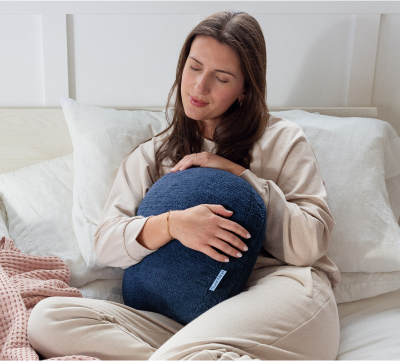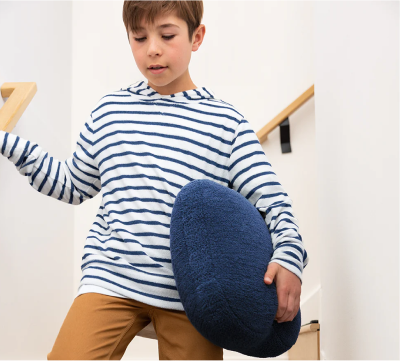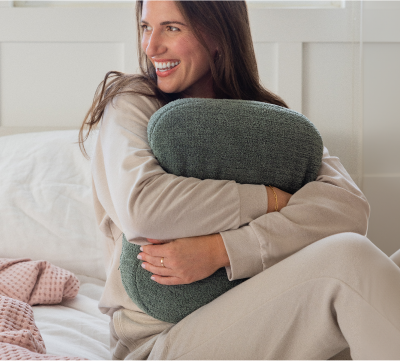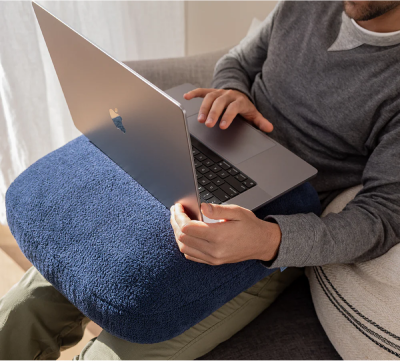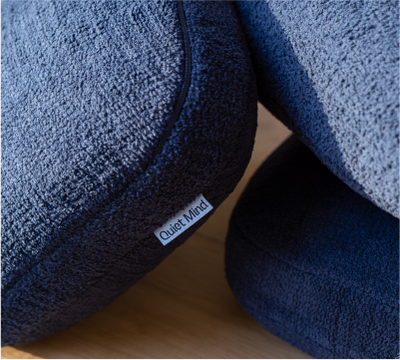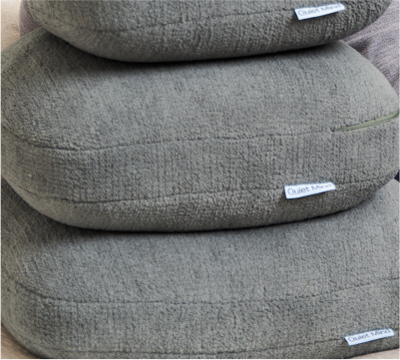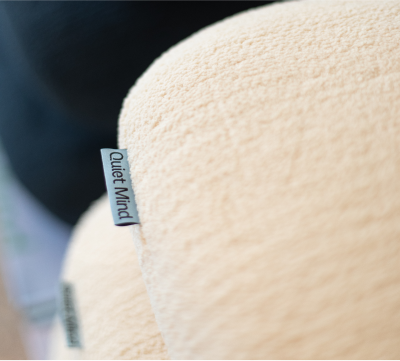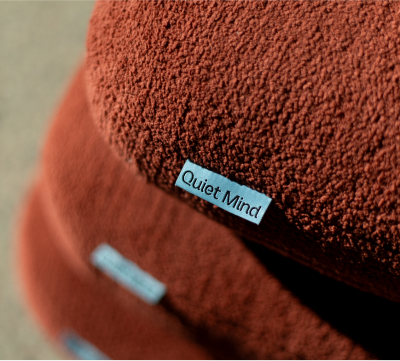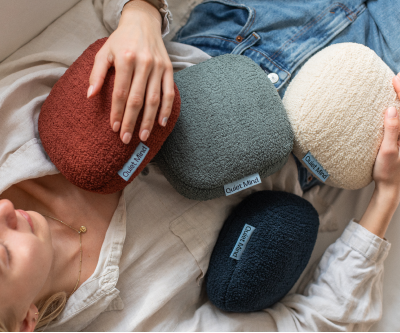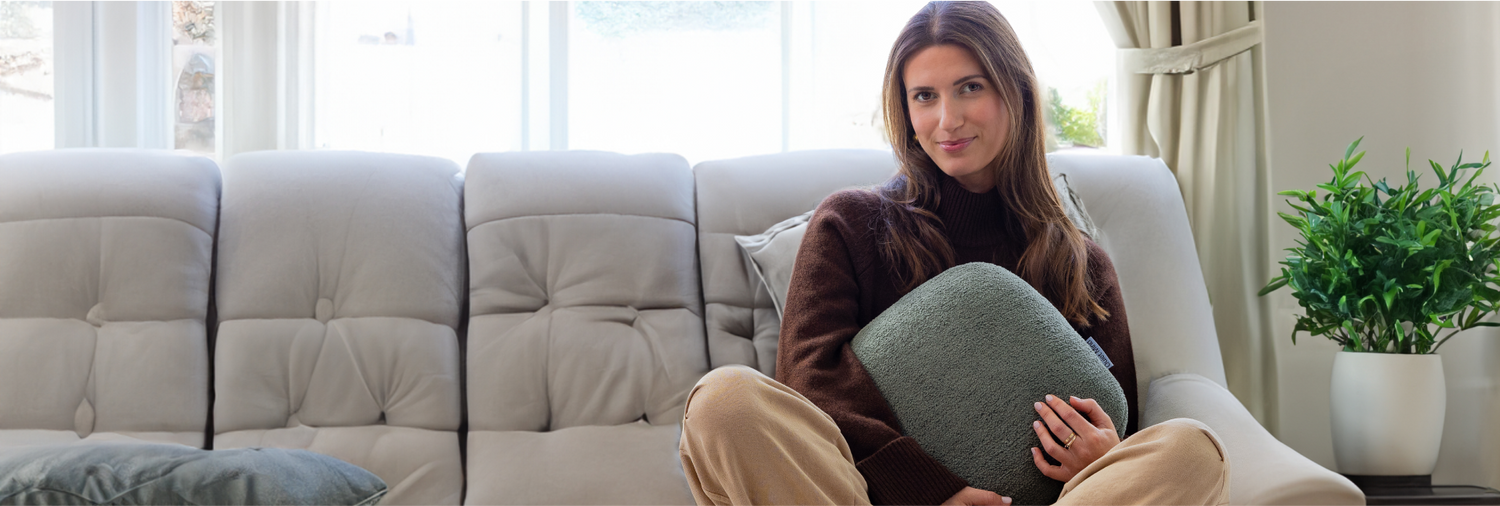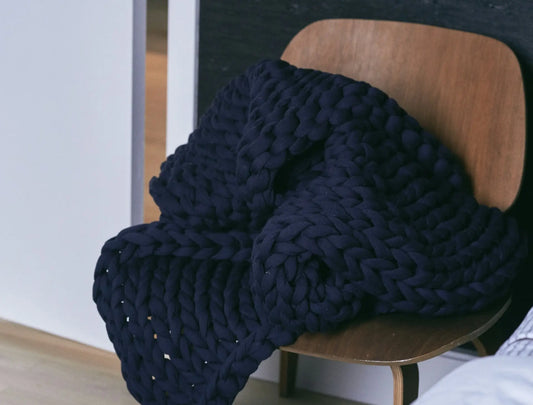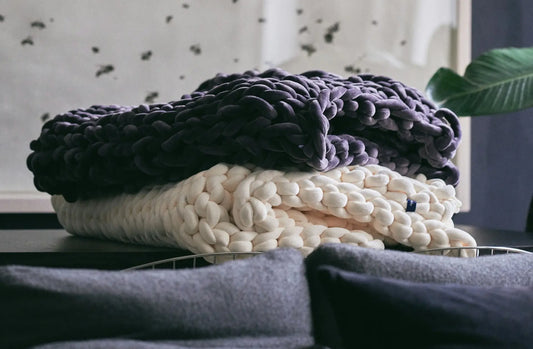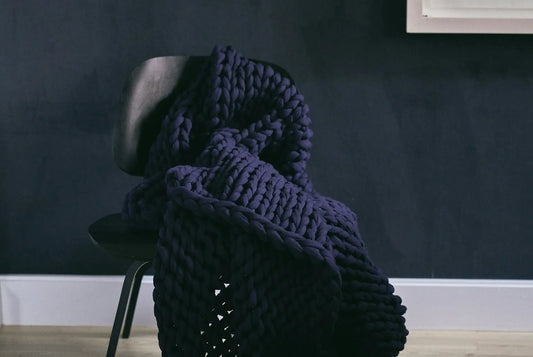A weighted blanket doesn’t just cover you, it grounds you. Whether you're seeking better sleep, calmer evenings, or softer mornings, this simple tool offers more than comfort. It speaks to your nervous system in a language of steady, quiet pressure.
But how long does it take for a weighted blanket to work? The answer is personal. For some, the shift is immediate. For others, it’s a gradual unfolding, like the body slowly remembering how to rest.
If you're navigating sleep problems, feelings of anxiety, or the aftereffects of stress, using a weighted blanket may gently help your system reset.
Understanding Weighted Blankets
Before exploring how weighted blankets work, it helps to understand what they’re doing beneath the surface. These aren’t just blankets, they’re sensory tools designed with purpose.
What Is a Weighted Blanket?
A weighted blanket is intentionally heavier than a standard comforter. It's typically filled with glass beads or pellets, evenly distributed to create gentle pressure across the body.
This therapeutic input is known as deep touch pressure or deep pressure therapy, a method often used to calm the nervous system, reduce stress and anxiety, and support those with sensory processing disorder, autism spectrum disorder, and attention deficit challenges.
Today, weighted blankets have become a popular self-care tool for people with anxiety, mental health disorders, and sleep disorders. The design may vary (cotton, fleece, or cooling fabric), but the intention is always the same: to help the body feel safe enough to rest.
How They Work
The pressure of a weighted blanket mimics the sensation of a firm but soothing hug. This kind of sensory input supports the release of serotonin and melatonin while helping to reduce cortisol, the body’s stress hormone. That shift may:
-
Encourage deep sleep
-
Help your body relieve pain or muscular tension
-
Support emotional balance and regulation
-
Reduce feelings of anxiety before bedtime
Weighted blankets can offer more than warmth. They invite safety into your sleep routine, especially for those navigating restless nights, autism spectrum, or overstimulation. The benefits of using a weighted blanket go beyond sleep, they help restore balance to a dysregulated nervous system.
Immediate Effects of Using a Weighted Blanket
For some, the response is almost instant, a deep exhale, a quieter mind, an easier descent into rest. Many people say that sleeping under weight helps them feel settled in a way that traditional bedding does not.
First-Night Experiences
You may notice:
-
A sense of calm as the blanket settles
-
Less tossing and turning for restless leg syndrome
-
Decreased tension, especially if you’ve been in fight or flight mode
-
Easier falling and staying asleep
While results vary, some participants found weighted blankets made a clear difference within hours, especially when paired with a dark, quiet space or relaxing blanket sounds.
Short-Term Benefits
Within the first few days to weeks, consistent use may:
-
Reduce feelings of anxiety
-
Lower nighttime cortisol levels
-
Improve emotional tone upon waking
-
Shift sleep habits toward a more grounded rhythm
These changes can be subtle. You might simply notice that bedtime feels less like a struggle, and mornings less heavy. That’s a sign your body is responding to the use of weighted blankets.
Adjustment Period: When Will You Notice the Benefits?
The journey to calm isn’t always immediate. Weighted blankets work best when they become part of your sleep rhythm, not just a one-time experiment. As your body adjusts, you may start to wonder if it’s OK to sleep with a weighted blanket every night, many do, and find deeper rest with consistent use.
The First Few Nights
Initial discomfort is possible. If you're not used to sleeping under weight, you may feel a little too warm or unsure how to move. That doesn’t mean it’s not working. It means your body is learning a new kind of safety.
If this happens:
-
Use the blanket during the day first, for a nap or while reading
-
Start with the blanket folded to reduce the weight
-
Keep the room cool to balance the sensory input
These gentle steps can help people with sensory sensitivities adapt without overwhelm.
14 to 21 Days: Forming a New Habit
Like any new support, the effectiveness of weighted blankets often increases with consistency. Within two to three weeks, many people:
-
Get used to sleeping under a steady, grounded layer
-
Notice more regulated mood and energy
-
Report improved onset and quality of sleep
This is especially true for those navigating mental health disorders, such as PTSD, or for people with autism who benefit from predictable nighttime routines.
90 Days: Deeper Integration
At the three-month mark, many describe their blanket as essential. It becomes part of the way you help your body feel safe. Your system may begin to anticipate the sensation at bedtime, making rest feel more accessible.
Consistent weighted blanket use has been shown in research to improve sleep quality and help reduce sleep disorders, anxiety, and restlessness in both neurodivergent and neurotypical users.
Factors Influencing Effectiveness
Not all experiences are the same. The way your body responds depends on several factors, each worth considering as you integrate this tool into your nighttime rhythm.
Choosing the Right Weight
A weighted blanket's heaviness must be correct for you, around 10% of your body weight. It must be heavy enough to offer grounding pressure, but not so much that it limits comfortable movement. A well-balanced blanket supports relaxation by applying steady, even pressure across the body.
If you have a medical condition like sleep apnea, poor circulation, or breathing challenges, always consult your doctor before regular use.
Consistency of Use
Like most tools, the benefits of using a weighted blanket grow with routine. Use it nightly. Let it become a symbol, one that tells your nervous system: you’re safe now.
You can even incorporate it into moments outside of sleep: while working, watching TV, or simply taking a break. Over time, your body may begin to associate the use of weighted blankets with decompression.
Personal Sensitivities
Weighted blankets are a popular support tool for many, but they shine in particular for people with autism spectrum disorder, attention deficit, or sensory processing disorder. These individuals often benefit from steady input that anchors the body.
But even if you don’t relate to those experiences, you may still benefit from a weighted blanket. Many use it to reduce feelings of anxiety, ease restless evenings, or help relieve pain from tension or stress. And if a blanket feels like too much, weighted pillows can be used as alternatives to weighted blankets, offering calming pressure in a smaller, more flexible way.
Tips for Maximizing Benefits
Creating a sense of calm is a practice. How you use your weighted blanket is just as important as the blanket itself, it plays a key role in whether you experience its full benefits.
Start Slow, Then Settle In
If you’re unsure how your body will respond:
-
Begin with 20–30 minutes while relaxing or napping.
-
Layer it over your legs or shoulders before trying full-night use.
-
Try using it during quiet, screen-free transitions in your evening.
These slow introductions allow your system to adjust to the additional weight without overwhelm. And if even this feels like too much, weighted pillows for sleep can provide the same grounding input in a smaller, lighter form.
Pair with Gentle Rituals
Layer your evenings with softness:
-
Try deep breathing or mindfulness before bed.
-
Dim lights and reduce stimulation.
-
Create a cozy space where your sleep habits feel intentional.
Track Your Sleep Gently
You don’t need technology. Just ask yourself:
-
Was it easier to fall asleep?
-
Did I feel calmer upon waking?
-
Has my mood shifted in subtle ways?
This kind of self-check-in helps you stay present, and adjust based on what feels good.
Grounding Made Simple with Weighted Pillows
Grounding rituals are small, intentional moments that help calm the mind and reconnect the body. Pairing these practices with a weighted pillow can deepen that sense of stability and ease. The gentle, even pressure signals safety to the nervous system, slowing heart rate and quieting restlessness.
Quiet Mind’s weighted pillow is designed to support these moments, offering calming pressure across the chest, lap, or shoulders to help the body feel settled and safe.
Weighted Blankets vs. Weighted Pillows: Which Works Faster?
Both tools use deep pressure to calm the nervous system, but the way they deliver results can differ depending on your needs.
Let’s take a look at the challenges you’ll likely face with weighted blankets:
-
Often require consistent nightly use before benefits show up.
-
Can feel heavy or restrictive during the adjustment period.
-
Best suited for long sleep sessions rather than short daytime resets.
-
Heat retention may make extended use uncomfortable for some.
Here’s how weighted pillows can add a reassuring touch to your nighttime routine:
-
Provide immediate calming pressure in short sessions, on the chest, lap, or shoulders.
-
Easier to integrate into daily routines without waiting weeks for results.
-
Lightweight and portable, making them effective for quick grounding at work or while traveling.
-
A cost-friendly option compared to full-sized blankets.
If you’re looking for quicker relief, Quiet Mind Weighted Pillows can deliver comfort right away, while blankets may take longer to show their full benefits.
Final Thoughts: Rest That Unfolds with Consistency
The use of weighted blankets is not about instant results, it’s about creating a calming ritual that supports your body over time. You may feel the shift on the first night, or it may take days or even weeks. What matters most is consistency, gentleness, and listening to what your body needs.
When you make a weighted blanket part of your sleep routine, you’re doing more than adding comfort, you’re inviting regulation. You’re giving your nervous system a tool to help reduce feelings of anxiety, support deep sleep, and soften the stress your body has been holding onto.
And the effects aren’t always loud. They may show up in small ways: fewer midnight wakeups, an easier time winding down, or simply feeling more at peace when you lie down. Over time, using weighted blankets becomes less about sleep and more about restoration.
About QuietMind
At Quiet Mind, we believe that rest isn’t something you earn, it’s something your body is wired for, when given the right support. Our approach honors the nervous system with tools that promote calm, safety, and steady emotional regulation.
One of those tools is our weighted pillow, thoughtfully designed to provide gentle, grounding pressure across the chest, lap, or shoulders. Whether you’re settling in for sleep or simply seeking a moment of relief during the day, it can become part of a ritual that helps you feel more anchored, more at ease, and more connected to yourself.
Frequently Asked Questions
Can I use a weighted blanket every night?
Yes. In fact, nightly use tends to deliver the best results, especially for sleep quality and anxiety reduction. Make sure the blanket feels breathable and comfortable.
Are weighted blankets safe for children?
With the right size and supervision, yes. The blanket should be no more than 10% of the child’s body weight, and they should always be able to remove it on their own.
Do weighted blankets help with anxiety and insomnia?
Many people report reduced anxiety and improved sleep within the first few weeks. The deep pressure signals the brain that it’s safe to relax.
How do I choose the right weighted blanket?
Start with the 10% body weight rule, but prioritize how the blanket feels. It should feel like a gentle embrace, not a constraint.
Can I use a weighted blanket with a medical condition?
It depends on the condition. If you’re unsure, speak with your healthcare provider, especially if you have circulatory, respiratory, or temperature-related concerns.
